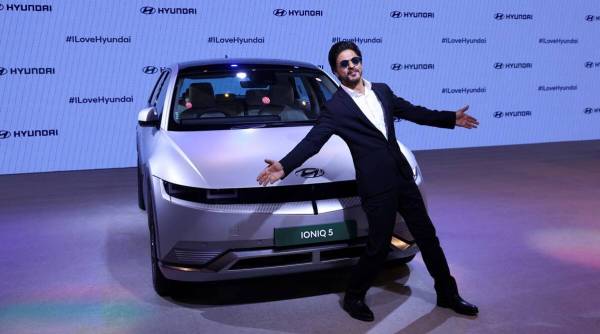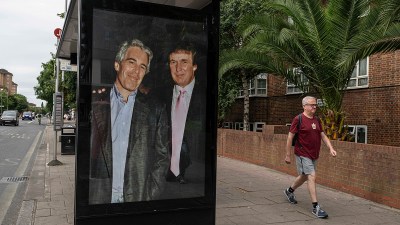Auto Expo 2023: Youth demand the best, drive up entry price point for new cars to Rs 10 lakh
A major trend at the Auto Expo 2023, happening after a span of three years, was the lack of any major launches of pure-play petrol or diesel models.
 At the Auto Expo 2023 in Greater Noida. (Express photo by Gajendra Yadav)
At the Auto Expo 2023 in Greater Noida. (Express photo by Gajendra Yadav) A theme that resonates across car makers and is reflective in the choice of models at the pavilions in the Auto Expo is the steady upward shift in the price preference of customers – from a median price of about Rs 5 lakh a decade ago to around Rs 10 lakh now.
“If you see what has happened in the last 10 years, you will see that 10 years ago, the median price of the car was Rs 3.5-4 lakh; in the next five years it rose to Rs 6-6.5 lakh and today it is Rs 9-9.5 lakh. Today 60-65 per cent of customers are less than 35 years old and they are confident about their future, are optimistic and they do not want to compromise,” says Shailesh Chandra, Managing Director, Tata Motors’ Passenger Vehicles Division and the head of Tata Passenger Electric Mobility.
 Bollywood actor Shahrukh Khan poses at the launch of Hyundai Ioniq 5 electric vehicle at the Auto Expo 2023 in Greater Noida, January 11, 2023. (REUTERS)
Bollywood actor Shahrukh Khan poses at the launch of Hyundai Ioniq 5 electric vehicle at the Auto Expo 2023 in Greater Noida, January 11, 2023. (REUTERS)
“The movement is towards what is the best thing they can consume and not what is their affordability. The affordability is not in lakhs but how much is the EMI going to be. So, if the gravitation is towards that, I have to move along with the trend of the market and that is what I am doing,” he says.
 Shah Rukh Khan attended the launching ceremony of the Hyundai IONIQ 5.
Shah Rukh Khan attended the launching ceremony of the Hyundai IONIQ 5.
The median, Chandra told The Indian Express, “is a reflection of where the affordability is”, adding that a new car in the entry segment has “perhaps lost its value proposition to a good condition used car that is bigger”.
With the exception of market leader Maruti Suzuki, which continues to be upbeat on the entry-level car segment, all major players clearly marked a move up the value chain at a time when the divide between entry-level cars with lower sticker prices and the premium-level segments has widened sharply, confirming the sharp cleavages in the post-Covid recovery process. A senior Maruti Suzuki executive confirmed the sluggishness in the rural segment, otherwise a big draw for entry-level cars.
Carmakers moving up the value chain reflects demand. Typically, lower-priced cars are bought by first-time users or those replacing used cars. With Covid impacting incomes of entry-level car buyers, purchases and upgrades by two-wheeler owners have been pushed back.
The other major trend at the country’s biggest auto show, happening after a span of three years, included the lack of any major launches of pure-play petrol or diesel models, as manufacturers reaffirmed their commitment to exploring the electric vehicle value chain – signifying, in part, an overwhelming consensus among auto companies that the way ahead is decidedly going to be driven by non-fossil fuel options.
 MG Motor India President and Managing Director Rajeev Chaba and MG Motor India Chief Commercial Officer Gaurav Gupta during unveiling of MG Motor’s ‘MG eHS’ electric SUV and ‘MG4’ EV at the Auto Expo 2023, in Greater Noida, January 11, 2023. (PTI)
MG Motor India President and Managing Director Rajeev Chaba and MG Motor India Chief Commercial Officer Gaurav Gupta during unveiling of MG Motor’s ‘MG eHS’ electric SUV and ‘MG4’ EV at the Auto Expo 2023, in Greater Noida, January 11, 2023. (PTI)
Toshihiro Suzuki, president of Suzuki Motor Corporation – the majority stakeholder in the country’s largest carmaker Maruti Suzuki India Ltd – says India’s green energy shift cannot be pegged only on battery electric vehicles and would require a variety of other options such as hybrids, CNG and hydrogen. Unsoo Kim, Managing Director, Hyundai Motor India says the company has all the future technologies — fuel cell, lithium-ion EV and flex fuel – and that it will line them up in tandem with the government policy and consumer demand trends.
 The Auto Expo, which was originally scheduled to be held in 2022 was postponed to this year due to COVID-19. (Photo: Twitter/@Maruti_Corp)
The Auto Expo, which was originally scheduled to be held in 2022 was postponed to this year due to COVID-19. (Photo: Twitter/@Maruti_Corp)
On the price trends, data from the country’s top three passenger vehicle manufacturers, Maruti Suzuki, Hyundai Motors and Tata Motors – these account for over 70 per cent of all car sales in FY 2021 – show they have made a decisive shift up the pricing brackets. For Maruti Suzuki, cars costing Rs 10 lakh and above (the premium segment), as a percentage of its total portfolio of models, has grown from just 2.5 per cent in FY20 to 14 per cent during the current fiscal.
For Hyundai Motor, that jump was from 20 per cent to 40 per cent; and for Tata Motors, it was up from 20 per cent to 28 per cent.
Numbers from industry lobby group Society of Indian Automobile Manufacturers (SIAM) for the first half of this fiscal showed that the sales growth is led by sports utility vehicles (SUVs), which constitute a big chunk of passenger vehicles costing over Rs 10 lakh and above. Sales of premium cars are expected to help auto companies clock record numbers this fiscal – the last record high year for automobile companies was 2018-19.
In contrast, entry-level cars, motorcycles and mopeds are struggling. SIAM data showed that the mini and compact-car segments had clocked a growth of 44 per cent and 9 per cent respectively, during the second quarter of this fiscal, lower than the peak year of 2018-19.
While mopeds were down 51 per cent from the 2018-19 peak, motorcycles (up 110 cc engine) were down 35 per cent.



- 01
- 02
- 03
- 04
- 05




























